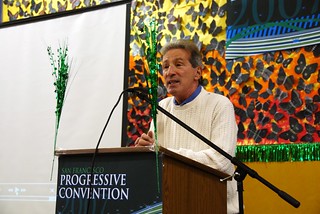Referendum Still Hangs in the Balance In Signature Verification Stage
by Brian Leubitz
Here in California, and the nation as a whole, gay rights is a concept that we are used to. People see gay and lesbian families on tv and in their neighborhoods. But the T in LGBT sometimes gets ignored. You need only look back at the fight back in the middle of the last decade over trans inclusion in ENDA to see how the transgender movement isn’t always included in the broader LGBT family. To some extent, we are seeing some positive momentum on public awareness, with Laverne Cox’s role on Orange is the New Black and her leadership on trans issues. (For example, take a look at this amazing clip of her on the Katie Couric show.)
But California is a leader in working to promote equality. We’re far from perfect, but Asm. Tom Ammiano’s School Success and Opportunity Act, which officially went into effect on Jan 1, gave transgender students a fair chance in our schools. The new law allows students to use gender segregated facilities and participate in activities for their chosen gender. The Transgender Law Center (an amazing and effective organization, btw) summarizes it this way:
Before the School Success and Opportunity Act, many schools did not understand how to fulfill their obligations to support transgender students. With this new guidance, schools – from Sacramento to San Diego – are now updating and implementing new policies to ensure all students have a fair chance to participate in all school programs and activities.
This law gives these students a fair shot to succeed. And, in fact, large majorities agree that transgender people deserve the same rights and protections as other Americans. But, there is still a lingering question as to what that really means:
However, the political X factor is that a large chunk of the population doesn’t know what transgender means. In that same survey, only 30 percent said they “completely agree” that they are well-informed about transgender people and their issues.
The activists proposing the ballot measure say no student should be bullied. But they are incensed about one aspect of the law: the question of access to restrooms and locker rooms. (SF Chronicle / Joe Garofoli)
And, as you see in the video to the right, Karen England, who is running the referendum campaign, doesn’t really understand what it means to be transgender either.
England, it turns out, is not a gender identity expert — her career has been devoted to right-wing politics. If she were familiar with the findings of the American Academy of Pediatrics – which reports that gender identity is generally established by about age four – she may not have been so shocked that the new law “is for kindergarteners as well as high schoolers.”
Moreover, England would also have recognized that boys won’t simply “wake up one day and] decide that they’re girls.” Not only do scientific findings rebut such claims, they also have no empirical basis. School districts that have enacted similar protections have reported no instances of inappropriate bathroom behavior. Right-wing media figures like Fox’s Bill O’Reilly and Greg Gutfeld have sought to stoke “bathroom panic,” based on nothing more than their claims that they themselves would take advantage of the law to sneak into women’s restrooms and locker rooms.([Media Matters)
Apparently Huckabee and England think this is some sort of trick to see girls changing after PE class. Because heterosexual boys are clamoring the world over to be thought of as having gender identity issues. In reality, this is no different than your standard rightwing sex panic BS. They understand that they can’t segregate gay students, and stop them from using the restrooms, or force students back into the closet. That is just clearly not going to happen. But this offers something that might make people unfamiliar with the issues uncomfortable..
And that squirm factor is what they are counting on to reignite the culture war in California.
“This could get voters who wouldn’t get out for other issues, but will for this,” said Karen England, a longtime conservative activist who is co-chairing the Privacy for All Students campaign to put the measure on the ballot. “And I think this will stop any other state from introducing” similar legislation.(SF Chronicle / Joe Garofoli)
And that is what this is really about, a chance to score political points at the expense of vulnerable students. It is playing with the future of children for a chance to ratchet up the heat on the culture war. As Laverne Cox states in the link above, we have a long way to go on transgender equality:
The reality of trans people’s lives is that so often we are targets of violence. We experience discrimination disproportionately to the rest of the community. Our unemployment rate is twice the national average; if you are a trans person of color, that rate is four times the national average. The homicide rate is highest among trans women. (Salon)
As for the referendum, TLC puts its current status this way:
The referendum attempt to repeal the School Success and Opportunity Act, AB 1266, did not qualify to go to the ballot box in November. Unfortunately, our opponents did gather enough signatures to require the state to conduct a full and thorough count. We are cautiously optimistic that after the full count results are in on February 24th, the referendum attempt will be doomed to the dustbin of history.
It will take a while to go through all of the signatures, and while England’s group got a boost from a legal victory last week, the outcome is still in the balance. A ballot measure would be both expensive, in addition to being highly offensive to vote on whether students will have equal opportunity.


